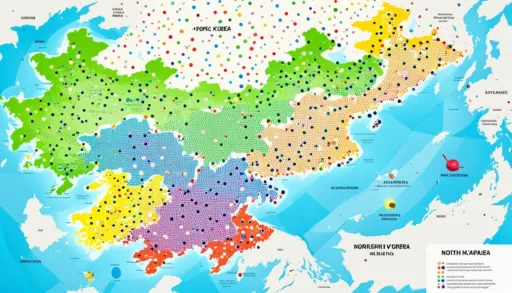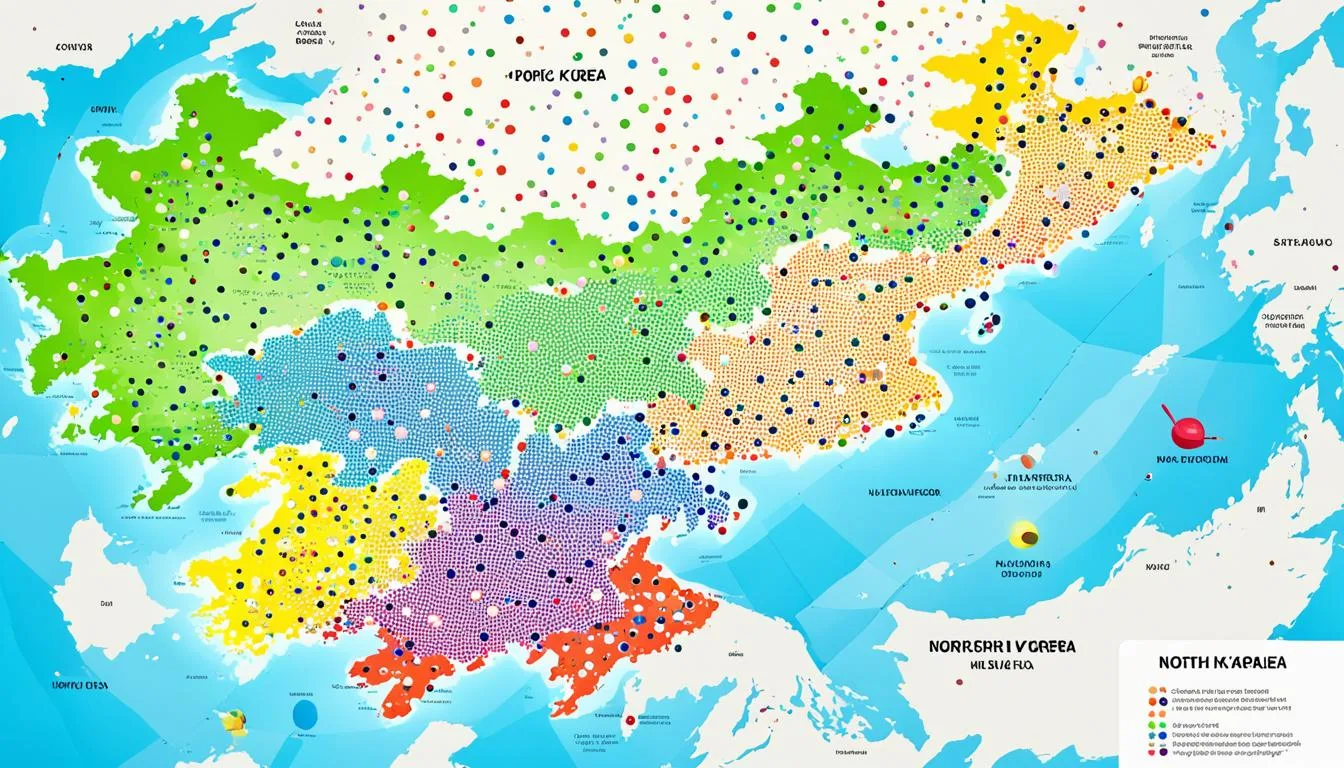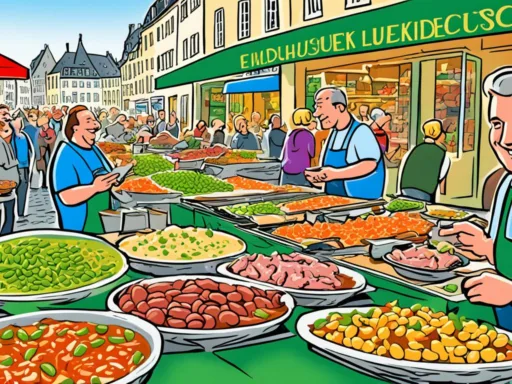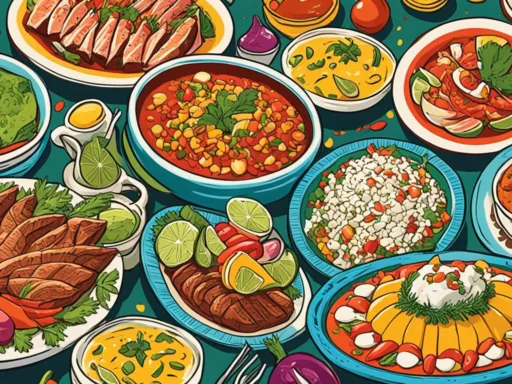While the world has a myriad of languages with an immense range of dialects, few are as uniquely modified by their political climate as those languages spoken in North Korea. This tightly governed nation surprises many with its specific standard language, Munhwaŏ, a Korean variant tailored to align with the country’s strict ideological standards and principles. In a communication sphere shaped by the state, understanding North Korean dialects offers fascinating insights into how language can be engineered by regime and philosophy.
Munhwaŏ, or “cultural language,” is not merely a tool for communication in North Korea but a symbol of the nation’s identity and autonomy. North Korea’s focus on reinforcing its cultural barriers has manifested linguistically, turning the Korean language into a state-controlled instrument reflecting Juche ideology. Beyond Munhwaŏ, various North Korean dialects contribute to a distinctive linguistic tapestry, challenging the homogenous portrayal often associated with the country’s culture and populace.
Key Takeaways
- Munhwaŏ serves as a unique symbol of North Korean identity and self-reliance.
- Communication in North Korea is heavily influenced by cultural and political ideologies.
- North Korean dialects are dictated by regional distinctions and state preferences.
- The evolution of Munhwaŏ reflects a broader narrative of North Korea’s historical and political journey.
- Understanding North Korea’s language offers a rare glimpse into the societal workings of a country shrouded in secrecy.
- Dialects such as Pyongan form the foundation of North Korea’s linguistic framework.
- The state-managed nature of the language reflects the country’s isolationist policies and cultural conservativism.
Introduction to Language in North Korea
The hermit kingdom of North Korea is home to a population where the Korean language serves not only as the official language but also as a fundamental aspect of national identity. Diverse in its composition, Korean features an array of regional North Korean dialects and variations. Despite being related to its counterpart south of the DMZ, the language has taken on its own characteristics and trajectories over time.
The core of the language, deeply intertwined with the nation’s culture, encompasses both Korean language variations and the distinct flavors of local dialects, which owe their nuances to the intricate social fabric and history of the region. The focus on maintaining linguistic purity has resulted in a consistent and steadfast approach to immigration, leading to a predominantly homogeneous ethnic composition within the state.
Korean stands alone in terms of linguistic classification, with debates still ongoing about its distant connections to the Altaic or Japonic language families. The isolation of the country alongside this language attribute suggests a profound feature of North Korea – the uniqueness of their tongue. Separation from South Korea has further emphasized the distinctions in language, leading to an intriguing blend of shared history and divergent evolution.
Over decades of separation, North Korea has forged a language that, while still intelligible to speakers from the South, is rich with expressions, intonations, and terminologies that are uniquely its own. This linguistic distinction embodies the essence of North Korea’s quest for self-identity and state-driven linguistic unity.
In this landscape of language, North Korea’s commitment to the purity and preservation of its official speech acts as a testament to its political and cultural ideals, with implications reaching far into the social realms of media, literature, and education.
Historical Evolution of North Korean Language
The Korean Peninsula has witnessed a significant linguistic evolution over centuries, culminating in the linguistic diversity North Korea showcases today. With its intricate blend of Korean language variations and its unique trajectory of cultural and political influence, understanding communication in North Korea requires a deep dive into its history.
Origins of the Korean Language
The roots of the Korean language stretch far back into the mists of history, marking its journey from the ancient languages of Old Korean to the Middle Korean period. Following this pattern, the contemporary Korean language has emerged, restructuring itself through the influence of historical narratives and societal shifts.
Impact of Political Changes on Language Development
Korea’s liberation from Japanese colonial rule in 1945 heralded a new era for Korean language development. The aftermath of partition in 1948 established divergent paths for the Korean language in the newly formed North and South Koreas. In the North, a conscientious effort to foster a unique articulation of Korean, influenced by the political climate and leadership, began to take shape.
Language Reforms Under Juche Ideology
Dedicated to creating a distinctive national character and strengthening political doctrine, North Korea’s Juche ideology propelled a series of language reforms. Central to these reforms was the aspiration to forge a Korean language that resonated with the spirit of self-reliance and nationalism. These reforms reached their zenith under the aegis of Kim Il Sung, effectively altering the course of communication in North Korea.
As the nation embraced these changes, linguistic diversity North Korea held onto, became subtly interwoven with the fabric of its cultural and political identity. This era marked the beginning of the concerted efforts to purify the language by methodically replacing foreign loan words while placing emphasis on indigenous vocabulary—a distinctive feature of Korean language variations.
Consider the following comparative overview of North and South Korean language variations influenced by Juche ideology:
| Aspect | North Korean Language (Munhwaŏ) | South Korean Language |
|---|---|---|
| Vocabulary | Less influenced by English and Sino-Korean loanwords | Greater influence of foreign loanwords |
| Orthography | Utilizes Korean Language Society’s proposals with modifications | Similar to pre-1945 standards |
| Grammar | Structured to align with Juche principles | Multiple layers of formality preserved |
| Ideological Expressions | Imbued with Juche and socialist themes | Absence of political ideology in expressions |
The table emphasizes the distinctive elements that characterize the Korean language within North Korea and highlights the contrast created through the linguistic diversity North Korea embraces. It is evident that the Korean language variations and the manner of communication in North Korea are deeply interlaced with the nation’s ideology and political stances. This alignment with North Korean cultural and ideological beliefs has made the language a formidable instrument of unity and national identity.
North Korean Standard Language – Munhwaŏ
The foundation of communication in North Korea is built upon a unique linguistic framework known as Munhwaŏ, the North Korean standard language. Stemming from the Pyongan dialect, Munhwaŏ has been officially upheld since 1966 as the epitome of the nation’s lingual heritage. Influenced greatly by both the political ideals of the region and the heritage of linguistic dialects such as Pyongan and Hamgyong, Munhwaŏ is a testament to the country’s commitment to preserving and fostering its distinctive cultural identity.
Despite sharing roots with South Korea’s language, Munhwaŏ boasts a set of characteristics that are uniquely North Korean. Vocabulary distinctions become particularly evident in terms such as everyday objects, educational terminologies, and even political expressions. The evolution of these differences is a direct reflection of state-enforced language policies that strategically integrate ideology within the vernacular. Noteworthy also is the presence of archaic grammatical structures, that lend Munhwaŏ a historical richness, underscoring the government’s meticulous approach to language as an expression of self-reliance and cultural integrity.
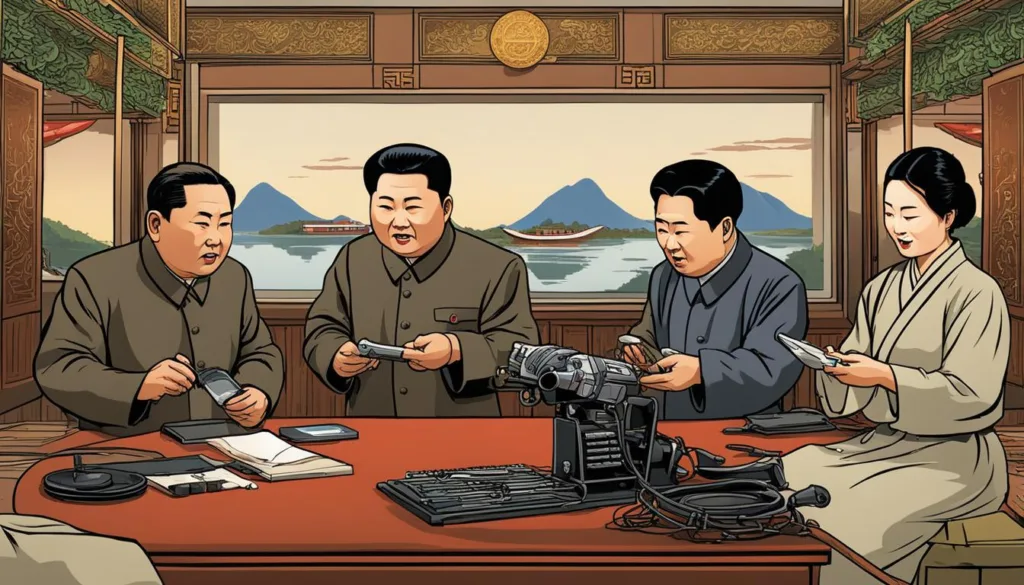
For linguists and enthusiasts alike, the examination of Munhwaŏ offers an intriguing glimpse into how language functions as a vessel for ideology. Language policies implemented by the government did not merely influence word choice or the refinement of vernacular; they established a framework through which all official communication in North Korea is filtered, facilitating a form of linguistic purity in alignment with the state’s values and political stance. This practice underscores Munhwaŏ’s role as more than a means of communication—it’s a potent symbol of national identity and philosophical adherence.
Unraveling the layers of Munhwaŏ, from its phonetic nuances to its vocabulary selection, opens up broader conversations about language’s ability to shape identity. The distinction of the North Korean standard language from its southern counterpart underscores the profound impact that socio-political forces have in steering the course of a language, right down to the syllables spoken by the populace. Through Munhwaŏ, North Korea communicates not only voices but also its values, heritage, and distinct place in the tapestry of world languages.
Dialects Influencing Official Language in North Korea
Linguistic diversity in North Korea is shaped by various regional dialects that contribute to the unique characteristics of its official language. The rich tapestry of sounds and expressions within these dialects plays a significant role in communication in North Korea and helps to define its cultural heritage.
The primary dialects that influence the North Korean standard language and showcase significant North Korean dialects include the Pyongan, Gyeonggi, and Hamgyong dialects. Each one brings distinct pronunciation patterns, vocabulary, and historical significance.
Pyongan Dialect
The Pyongan dialect, deeply rooted in the northwestern regions of Korea and neighboring Chinese territories, is the cornerstone of North Korea’s official language. Characterized by a distinctive eight-vowel system, it diverges noticeably from other North Korean dialects. The Pyongan dialect’s influence is most prominent in the capital city of Pyongyang, where it forms the basis of communication in North Korea at an official level.
Gyeonggi Dialect
Though its origins are tied to the area surrounding Seoul, the prestigious Gyeonggi dialect has historically woven its way into the linguistic fabric of both the North and South Korean standard languages. In North Korea, the dialect is notably present in regions such as Kaesong, thereby enriching the linguistic diversity of North Korea.
The influence of these dialects can be summarized in the following comparative table which encapsulates their unique features:
| Feature | Pyongan Dialect | Gyeonggi Dialect |
|---|---|---|
| Vowel System | Eight-vowel system | Standard seven-vowel system, similar to Seoul |
| Usage Area | Pyongyang, northwestern regions | Kaesong, areas close to South Korea |
| Unique Characteristics | Specific vocabulary and terms not found in other dialects | Considered prestigious, influencing both North and South Korean languages |
Despite the prevalence of these dialects, there remains much to be discovered about the elusive Hamgyong dialect, which is less documented in available resources.
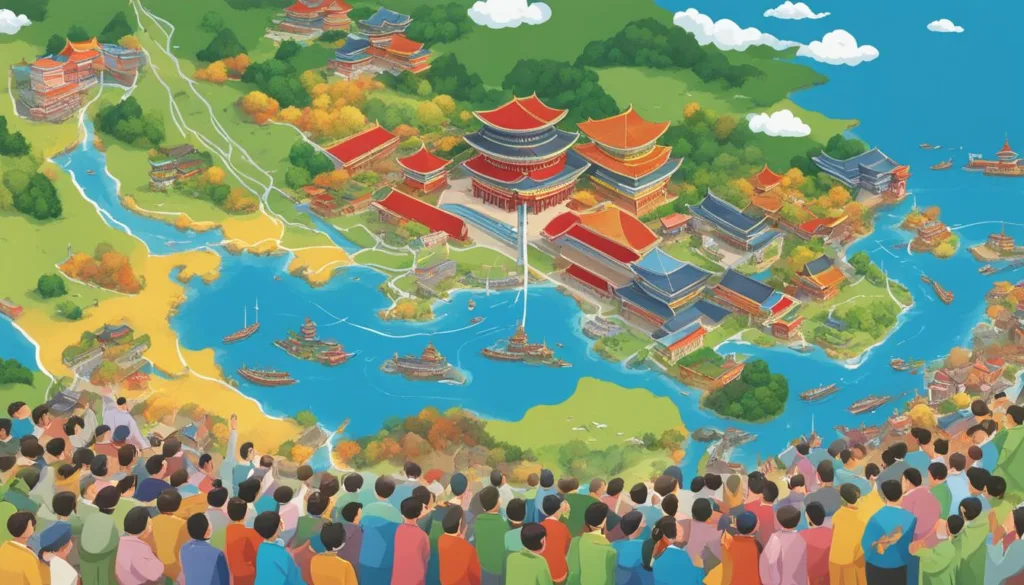
Vocabulary Maintenance in North Korea
In the pursuit of preserving the North Korean standard language, the country has instigated a unique approach towards linguistic diversity in North Korea. These efforts reflect not only a cultural initiative but a political strategy to unify the nation through language.
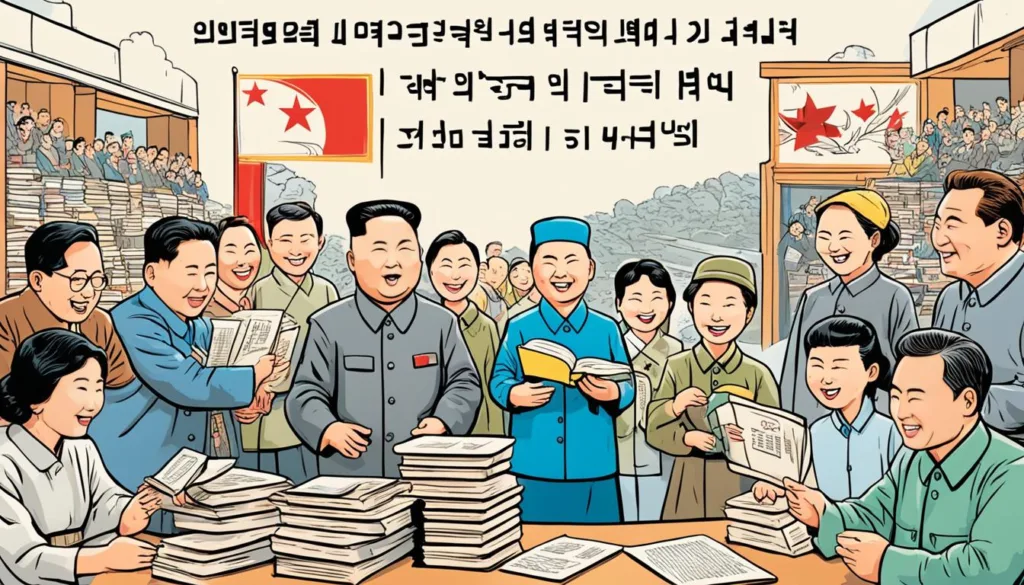
Purging Foreign Influences
To solidify the North Korean standard language, active measures have been taken to purge foreign lexical influences from it, which have been deemed antithetical to the nation’s identity and independence. The creation of a linguistically homogenous society aligns with the broader goals of North Korean self-reliance and sovereignty.
Creation of New Nationalistic Terminology
The initiative to discard non-native words extends to the official creation of new, nationalistic terms. This is a reflection of North Korea’s resilient stand against foreign dominion and its commitment to advancing linguistic diversity in a manner that is truly Korean.
| Original Term | Foreign Influence | Replacement Terminology |
|---|---|---|
| Ice Cream | English | Eskimo |
| Computer | English | Electronic Brain |
| High Heels | English | High-nosed Shoes |
By mandating such comprehensive language revisions, North Korea strives to maintain a strong cultural fortitude by fostering a unique form of linguistic diversity within North Korea.
The Role of the Language Research Institute
The Language Research Institute, a prestigious arm of the Academy of Social Sciences, is North Korea’s authoritative body on matters concerning the official languages of North Korea. Its primary mission is to meticulously oversee the regulation, refinement, and progression of the Korean language within the parameters of the nation’s cultural framework, specifically the Munhwaŏ standard.
Charged with the monumental task of not only maintaining but also evolving the language, the Institute ensures that every term and phrase aligns with the ethos of national identity and political ideology. This painstaking process involves scrutinizing textbooks, literature, and media content, infusing consistency and ideological correctness into the very fabric of communication across North Korea.
The Institute’s role extends into the realm of vocabulary management, a process that is dynamic and ongoing. Through the regular release of updated terminology, the Institute equips the populace with linguistics that reflect the contemporary social, technological, and political advancements, all the while sustaining the unique linguistic attributes of the Munhwaŏ standard.
Below is an example of the linguistic oversight functions performed by the Language Research Institute:
| Munhwaŏ Standard Task | Description |
|---|---|
| Monitoring Language Use | Ensuring consistent application of the standard across all forms of media and education. |
| Curating Vocabulary | Systematically updating and refining the lexicon to align with current cultural and political thought. |
| Maintaining Linguistic Purity | Removing foreign influences and bolstering the use of indigenous expressions. |
| Conducting Research and Publication | Publishing linguistic research findings to inform and guide the appropriate use of the Korean language in various contexts. |
This Institute, therefore, not only sets the standards but also ensures that the rich tapestry of the North Korean language remains untainted and pure, projecting power and unity through the refined use of words and idioms that resound with the nation’s proud heritage and self-sufficiency.
Differences Between North and South Korean Languages
The impact of historical, political, and social forces has driven a wedge between the spoken languages of North and South Korea. Despite sharing common roots, the Korean language has developed distinct flavors on each side of the demilitarized zone, reflecting differences in ideology, culture, and policy.
Grammar and Pronunciation Variations
Uniquely formed by the North’s state-led language development, communication in North Korea showcases characteristic grammar and pronunciation that set it apart from the South. These modifications reflect attempts to purify and refine the language in alignment with North Korean nationalism and the tenets of its ruling philosophy.
Vocabulary and Spelling Disparities
The North–South differences in Korean language extend to the lexicon itself as well as orthography. North Korea has engineered vocabulary and adjusted spellings to endorse a separate identity from its southern neighbor, reinforcing a divide that transcends the political and goes into the realm of language and expression.
Languages Spoken in North Korea
North Korea presents an intriguing study of linguistic homogeneity. With the powerful grip of the state on cultural and ethnic identity, the Korean language dominates the national conversation, leaving minority languages in North Korea at the periphery. Despite restrictive immigration policies, traces of linguistic diversity offer a glimpse into the country’s closed society.
Presence of Minority Languages
While Korean is the lingua franca within the Democratic People’s Republic of Korea (DPRK), there remains a limited but notable presence of minority languages. These minority languages are primarily associated with the small Chinese and Japanese communities residing in North Korea, a consequence of historical migrations and tightly controlled current immigration practices.
Impact of Limited Immigration on Linguistic Diversity
North Korea’s stringent immigration control has undeniably shaped the ethnic and linguistic fabric of the nation. This has led to a landscape where **linguistic diversity** is not just rare but also systematically suppressed in favor of promoting a singular national identity closely tied with the regime’s ideologies.
- Language Name
- Chinese
- Japanese
| Minority Language | Speaker Estimate | Regions Spoken |
|---|---|---|
| Chinese (Various Dialects) | Small community | Border areas near China |
| Japanese | Very limited | Historical communities, urban centers |
Conclusion
The linguistic tapestry of North Korea is a reflection of its quest for political and cultural sovereignty, as encapsulated in how languages are spoken in North Korea. The robust identity of the Munhwaŏ stands as a testament to the country’s meticulous efforts in crafting not just a standard language, but an emblem of national sentiment and self-reliance. Through the years, the Korean language variations have been less about dialectical diversifications and more about ideological assertions, a core strategy aimed at reinforcing the state’s autonomy in communication in North Korea.
The guidance of doctrinal principles, primarily Juche, has singularly enabled North Korea to delineate a version of the Korean language that is structurally akin, yet lexically and phonologically distinctive from that of South Korea. As a nation, North Korea’s methodology in maintaining a pure linguistic environment has involved the integration of native elements while eschewing external linguistic influences. This underscores other facets of the country’s governance—introspective, controlled, and keenly focused on the perpetuation of a unified national ethos.
In essence, the evolution and management of the Korean language within the DPRK’s borders illustrate a broader narrative of cultural resilience and ideologically-driven restructuring. Languages spoken in North Korea thus go beyond the mere mechanics of communication; they resonate with the country’s enduring narrative of independence, from the ideological core to the words that populate its lexicon.
